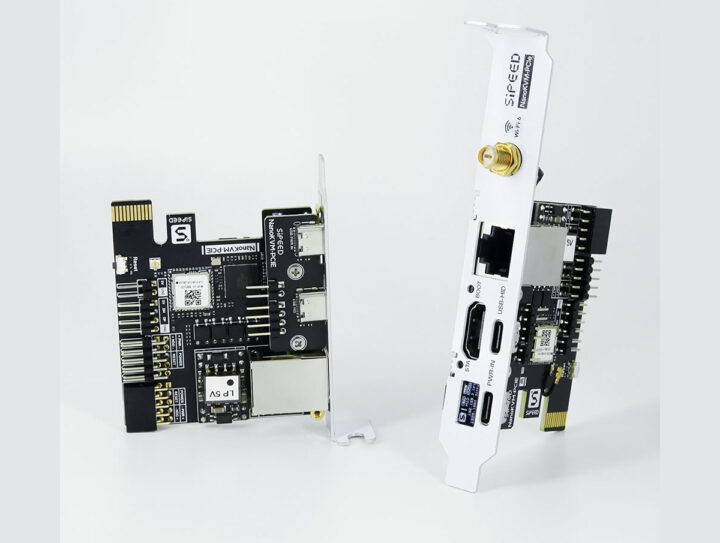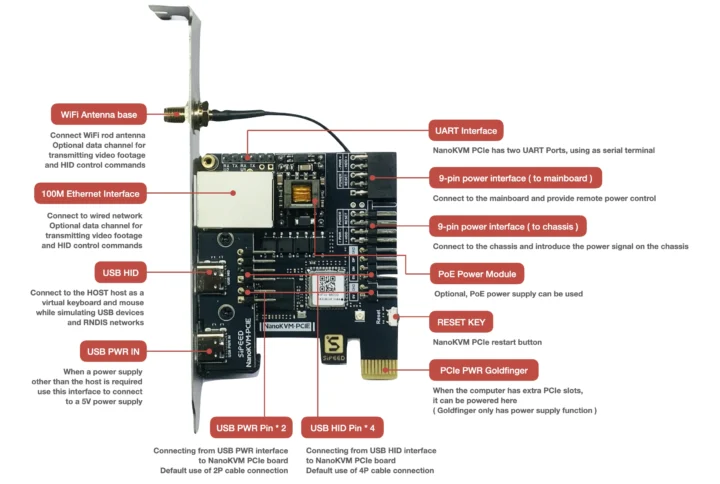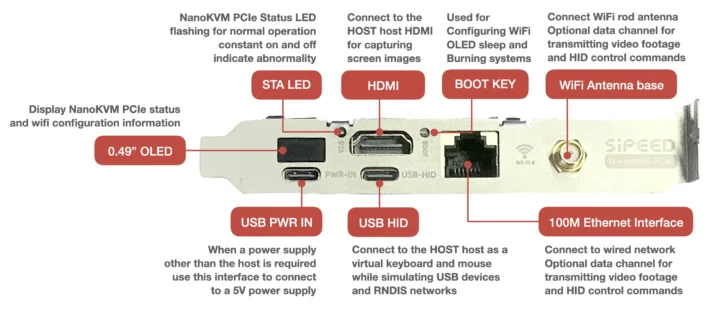Sipeed NanoKVM-PCIe is a variation of the NanoKVM KVM-over-IP solution introduced last summer, but instead of being a tiny Cube with USB-C power, the new model can be powered through the PCIe slot from the host (as well as USB-C) and adds optional WiFi 6 and PoE functionality.
While it’s not based on the LicheePi Nano SBC like the NanoKVM, it relies on the same SOPHGO SG2002 RISC-V/Arm/8051 SoC and offers many of the same ports in a different form factor including 10/100Mbps Ethernet, two USB-C ports one for HID, the other for power, a small OLED information display, and an HDMI input port supporting up to 1080p60.
NanoKVM-PCIe specifications:
- SoC – SOPHGO SG2002
- Main core – 1GHz 64-bit RISC-V C906 or Arm Cortex-A53 core (the latter is likely not used here)
- Minor core – 700MHz 64-bit RISC-V C906 core
- Low-power core – 25 to 300MHz 8051 MCU core
- VPU – MJPEG/H.264 video encoding
- NPU – 1 TOPS INT8, supports BF16
- Integrated 256MB DDR3 (SiP)
- Storage – MicroSD card slot (ready to use on boot)
- Video Input – HDMI input up to 1080p60 via MIPI CSI to HDMI adapter board with 90 to 230ms latency
- Networking
- 10/100Mbps Ethernet RJ45 port with optional PoE
- Optional WiFi 6 with SMA antenna connector
- Information Display – 0.49-inch OLED display with 64×32 resolution
- USB – USB-HID Type-C port for connection to PC for keyboard/mouse emulation
- Misc
- BOOT Button
- STA LED
- 2x UART (Tx/Rx) via pin header
- Power Supply
- Via PCIe connector
- Via USB Type-C PWR-IN connector
- Via optional PoE module
- ATX power control connecting directly to the 9-pin power header on the motherboard
- Power Consumption – 0.2A @ 5V
- Dimensions – 66 x 57 x 18 mm (without panel)
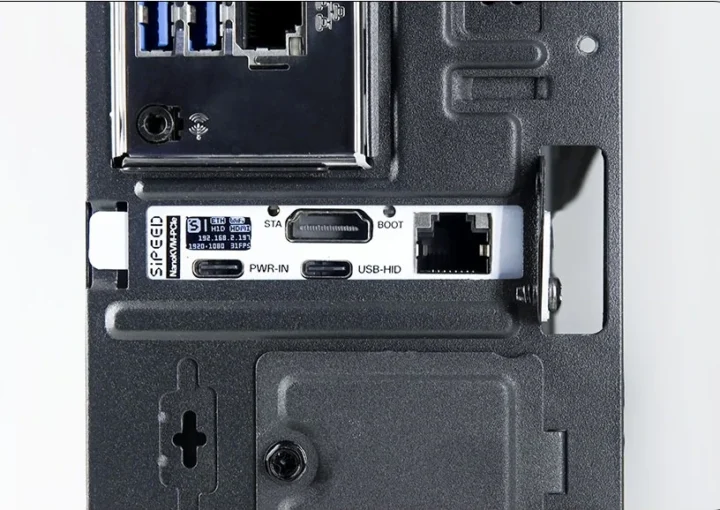
The NanoKVM-PCIe shares the same firmware as the smaller NanoKVM Cube with support UEFI/BIOS control, emulated USB mouse/keyboard, emulated USB storage, IPMI, WoL, Tailscale, WebSSH, and custom scripts. The firmware (binary-only) can be found on GitHub along with the code for the server and web frontend. The wiki has more details about the hardware and getting started with the remote management tool.
The latest version of the firmware (V1.3.0) implements the following:
- MPJEG and H.264 encoding up to 1080p60fps
- Expanded user space RAM from 128MB to 158MB
- Automatic firmware update when first powered on
- Virtual HID keyboard and mouse, USB mass storage, and USB network
- ATX Power control
- Tailscale, FRPC
- WebSSH and Serial Console (control SBC or switch)
- Wake on LAN (WoL)
- Custom scripts
- IPv6, mDNS, static IP, etc…
- Optimized OLED display
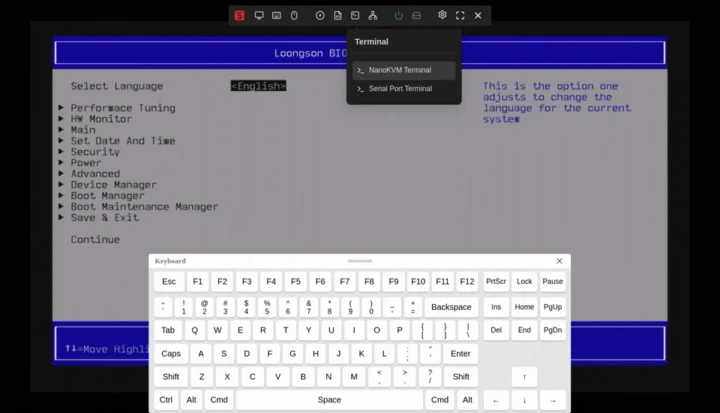
The NanoKVM-PCIe card can be purchased on AliExpress for $54.99 to $69.99 depending on PoE and WiFi options, and you’ll also find it on Amazon for $50 to $70. Note those are resellers, and Sipeed also takes “pre-orders” on its own website for $42 to $58 plus shipping [Update: Sipeed has now listed the device on AliExpress and it’s cheaper there]. I also see the company is working on the NanoKVM-USB as a plug-and-play device working with Google Chrome out of the box, and NanoKVM-DP which I assume is for DisplayPort input.
As a side note, the US government loves to blacklist companies for “national security” reasons, and Reuters recently reported that SOPHGO is in the crossfire because of the more powerful AI chip (likely SG2380) from the company that allegedly uses IP from Huawei, but SOPHGO denies it. It would be laughable to argue the low-end SG2002 AI SoC poses a threat to any country, but it may also be caught in the blacklisting net if the US government goes ahead… It’s just something to keep in mind depending on where you live.
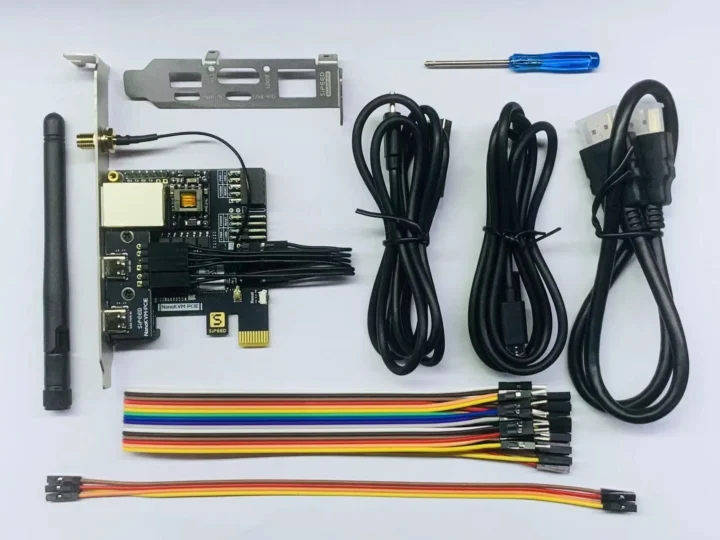

Jean-Luc started CNX Software in 2010 as a part-time endeavor, before quitting his job as a software engineering manager, and starting to write daily news, and reviews full time later in 2011.
Support CNX Software! Donate via cryptocurrencies, become a Patron on Patreon, or purchase goods on Amazon or Aliexpress


